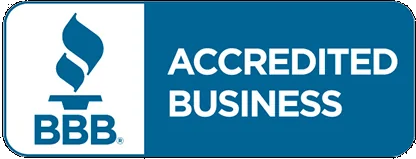.webp)
.webp)
Understanding the Mortgage Loan Estimate (LE)
The Loan Estimate outlines key loan terms and costs. Learn how this document helps borrowers navigate home financing with clarity and confidence.
Back on October 3, 2015, a significant change occurred in the mortgage industry that altered how mortgage applications are processed in the United States. While this day might have passed unnoticed by most Americans, it marked a pivotal moment for lenders, mortgage brokers and potential homebuyers. The change was introduced to enhance transparency in the mortgage process and reduce the chances of financial pitfalls like those that contributed to the 2007-2008 global financial crisis. The introduction of the Loan Estimate (LE) is a key element of these regulatory changes. But what exactly is a mortgage LE, and why is it so crucial for both borrowers, mortgage brokers and their lenders?
What is a Mortgage Loan Estimate (LE)?
A Loan Estimate (LE) is a standardized document provided by lenders to potential borrowers after they apply for a mortgage. This document, typically three to 4 pages long, is designed to offer borrowers a clear overview of the terms and closing costs associated with the mortgage loan they are considering. According to the Consumer Financial Protection Bureau (CFPB), lenders are required to provide an LE within three business days of receiving a mortgage application.
The LE includes vital details such as the loan amount, interest rate, Annual Percentage Rate (APR), estimated monthly payments, and closing costs. It also outlines any fees or potential penalties that may apply if the borrower misses payments or decides to pay off the loan earlier than agreed. This information empowers borrowers by giving them a transparent view of the costs involved, allowing them to make informed decisions about whether to proceed with the loan.
The Three Key Components of an LE
The Loan Estimate document is divided into three main sections, each serving a specific purpose:
- Loan Terms: This section provides a summary of the loan's key terms, including the loan amount, note interest rate, and the projected monthly principal and interest payments. It also includes information on whether the interest rate is fixed or adjustable and whether the loan includes any prepayment penalties or balloon payments.
- Projected Payments: This section breaks down the estimated monthly mortgage payments, including principal, interest, mortgage insurance, and escrow. It also shows how these payments might change over time, especially if the loan has an adjustable interest rate or other variable components.
- Closing Costs: The third section details the estimated closing costs associated with the loan, including lender fees, third-party fees, and prepaid items like property taxes and homeowner's insurance. It provides a clear breakdown of the total cash required at closing, giving borrowers a realistic understanding of what they will need to pay upfront.
How Does an LE Differ from a GFE?
Before the 2015 introduction of the Loan Estimate, borrowers received a Good Faith Estimate (GFE) when applying for a mortgage. While both documents serve a similar purpose, the LE has replaced the GFE as part of the Know Before You Owe mortgage disclosure rule. The LE is considered a significant improvement over the GFE for several reasons:
- Clarity and Simplicity: The LE was designed to be more user-friendly, using plain language and a standardized format that makes it easier for borrowers to understand. This contrasts with the GFE, which often contained confusing financial jargon.
- Comparison Shopping: The LE encourages borrowers to compare loan offers from different lenders. By presenting the costs and terms in a straightforward manner, borrowers can easily weigh their options and choose the loan that best fits their needs. Onshore Mortgage, LLC shops your mortgage with varius wholesale mortgage lenders offering some of the most competative market rates.
- Fee Transparency: One of the most significant advantages of the LE is its emphasis on fee transparency. Under the Know Before You Owe rules, lenders are prohibited from increasing disclosed fees unless there is a significant change in the loan terms or the borrower's financial situation. This protection was not as robust under the GFE system, where fees could change more easily, leading to unpleasant surprises for borrowers.
Your LE is Not a Mortgage Approval
It's important to note that receiving a Loan Estimate does not mean that your mortgage application has been approved. The LE is simply a tool that provides you with an estimate of the costs and terms associated with the loan you're considering. It is not a commitment from the lender to approve your loan. Approval will depend on various underwriting factors, including the loan options, your creditworthiness, income, and the property appraisal value.
Why the LE Matters
Applying for a mortgage can be a daunting process, especially for first-time homebuyers. The paperwork, the financial terminology, and the sheer magnitude of the decision can be overwhelming. The LE is designed to simplify this process by offering clear, straightforward information that helps borrowers make informed choices. By understanding the costs and terms of the loan upfront, borrowers can avoid unexpected surprises down the road and feel more confident in their decision to proceed with the mortgage.

Latest Posts


Grant R. Menard MLO NMLS# 17308
CLICK HERE
Onshore Mortgage

Massachusetts Division of Banks NMLS#MB1995582
CLICK HERE
The information contained in this site has been prepared by an independent third party and is distributed for educational purposes only. This is designed to give helpful tips on the mortgage process and is not intended to give legal advice.
Information is considered reliable but not guaranteed. This is not a pre-qualification, pre-approval, loan approval or commitment to lend. We arrange but do not make loans.
© 2020 Onshore Mortgage, LLC. all rights reserved.


.webp)
